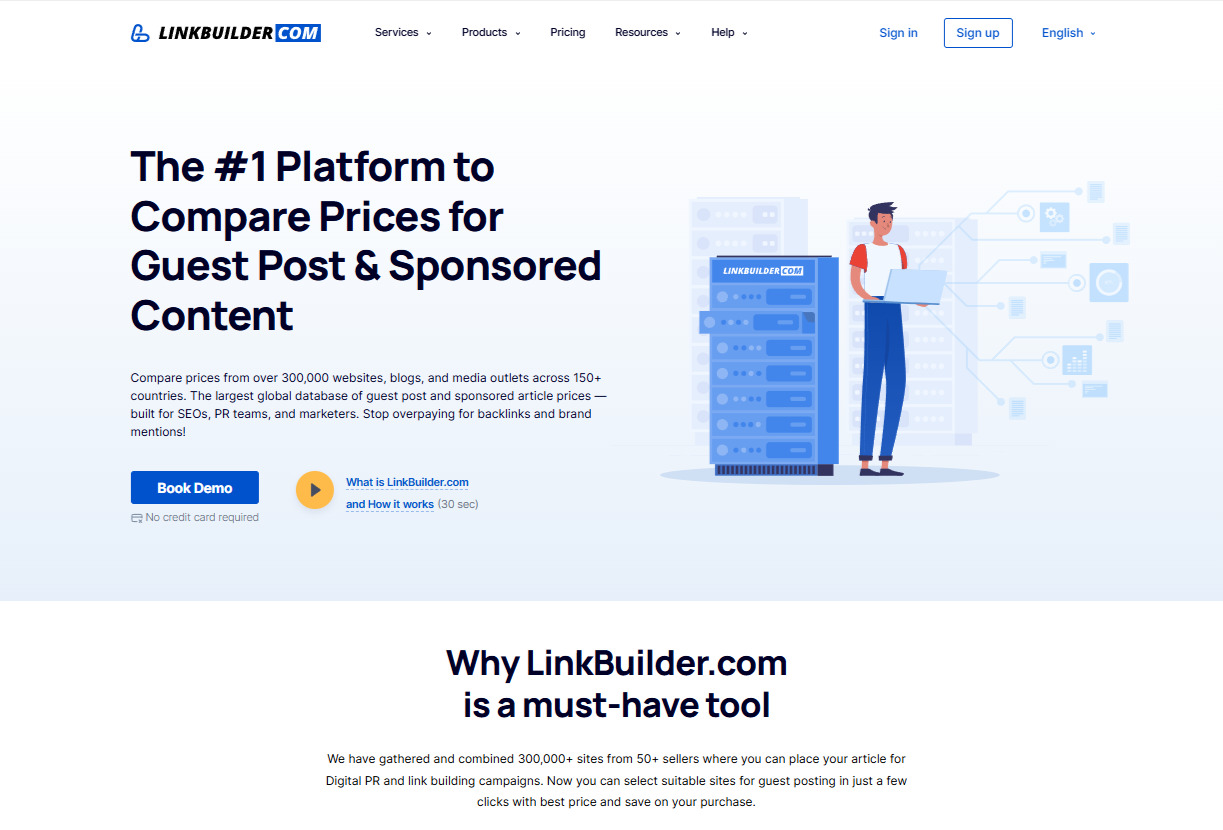Today’s internet users want precise answers to their questions, and they want them as quickly as possible. Search engines are actively adapting to this demand, increasingly providing direct answers in search results.
In this article, you’ll learn everything about Answer Engine Optimization – an SEO AEO approach that helps your content appear in answer boxes, boosting your site’s visibility even without user clicks. We’ll break down how to optimize for Answer Engine Optimization, the factors influencing placement in answer blocks, and provide a step-by-step AEO strategy for maximum results.
What is Answer Engine Optimization (AEO)
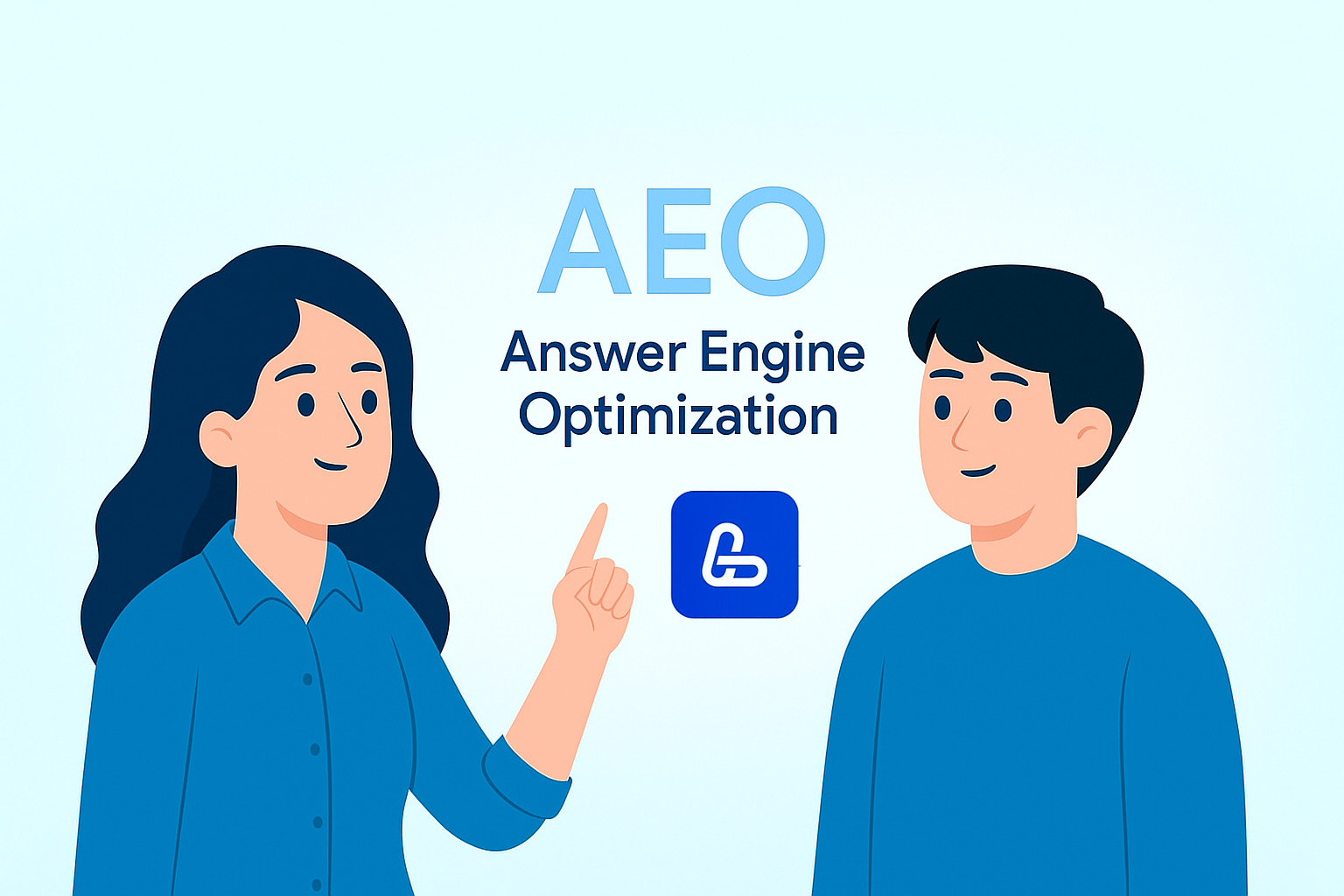
Answer Engine Optimization (AEO) is a content optimization approach aimed at securing positions in search engines’ direct answer blocks. Unlike traditional search engine optimization (SEO), the goal of AEO isn’t just to rank on the first page of results but to ensure that answer engines use information from your site to provide instant answers to user queries.
The evolution of Answer Engine Optimization is closely tied to the development of search engines. It all began in 2012 when Google introduced the Knowledge Graph – a knowledge base used to enrich search results with information for user queries. In 2014, featured snippets appeared, displaying direct answers to user questions.
Starting in 2015, voice search saw rapid growth with the emergence of virtual assistants like Siri, Google Assistant, and Alexa. These assistants often rely on featured snippets and other answer blocks to respond to user queries, making SEO for answer boxes crucial for businesses.
By 2025, AEO SEO has evolved into a standalone digital marketing discipline with its own strategies, metrics, and tools.
Why AEO is a Major Trend in 2025
Answer Engine Optimization is one of the most promising trends in digital marketing in 2025 for several reasons:
- Changing User Behavior. Modern users expect instant answers to their questions and often aren’t willing to spend time reading full articles.
- Growth of Mobile Internet. On mobile devices, answer blocks occupy significant screen space, making them highly visible.
- AI Integration in Search Engines. Google SGE (Search Generative Experience), Bing AI, and other technologies actively use generative AI to create direct answers.
- Rise of Voice Search. According to eMarketer, by 2025, over 50% of all search queries are conducted via voice, and voice assistants almost always deliver just one answer.
- Increased Competition for Organic Traffic. Declining organic CTR makes competing for answer blocks one of the few ways to maintain brand visibility in SERPs.
Why Zero-Click Search Queries Dominate
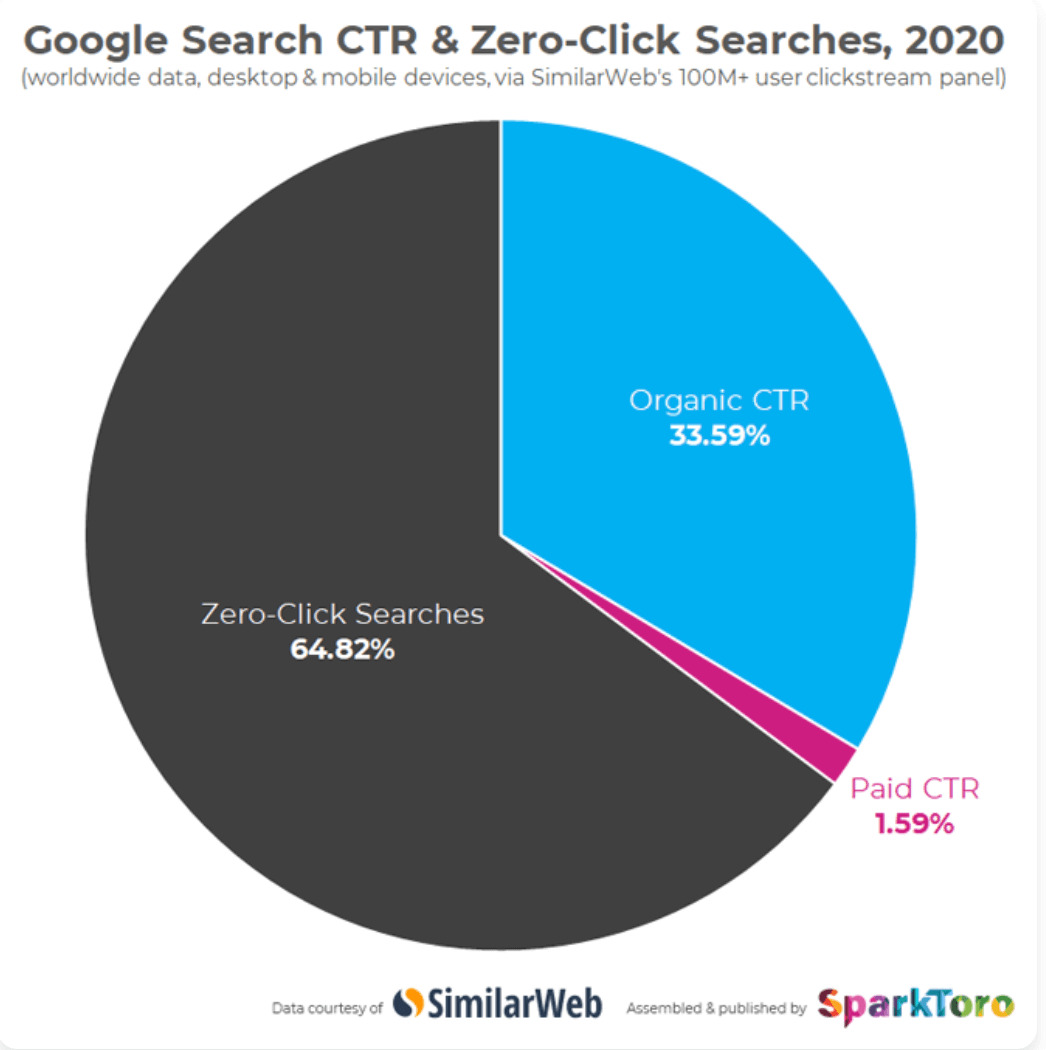
Zero-click searches occur when users get their answer directly in search results without clicking through to any website. According to a study by SimilarWeb and SparkToro, such queries accounted for 65% of searches in 2020.
Reasons behind the dominance of zero-click searches:
- User Convenience. No need to wait for a website to load for a simple answer.
- Expansion of Answer Blocks. Featured snippets, Knowledge Panels, calculators, weather forecasts, sports scores – all these elements provide information directly in SERPs.
- Local Search. Queries like “restaurants near me” or “nearby pharmacy” can be satisfied via maps and local packs right in search results.
- Straightforward Queries. For queries with obvious answers (e.g., “how many planets are in the solar system”), users rarely visit websites.
This trend makes optimizing for featured snippets not just desirable but essential for maintaining brand visibility.
The Rise of AI-Powered Search
AI-driven SEO is booming. Search engines are increasingly implementing AI technologies to improve result quality:
- Google SGE (Search Generative Experience) – a system using generative AI to create enriched answers by combining information from multiple sources.
- Bing AI integrates ChatGPT directly into search results, offering an interactive experience.
- Natural Language Understanding (BERT, MUM, LaMDA) helps search engines better grasp query context and user intent.
- Multimodal Search allows users to search via text, voice, and images, requiring new optimization approaches.
In this landscape, SEO for answer boxes becomes a cornerstone of SEO AEO strategy.
Business Impact: Traffic or Engagement?
The rise of zero-click searches raises a valid question: Is it worth aiming for answer blocks if they don’t drive traffic? The answer depends on business goals.
Pros of SEO for answer boxes:
- Brand Awareness. Even without clicks, users see your brand as an authoritative source.
- Capturing Complex Queries. After getting a basic answer, users often seek additional details, and your site remains visible.
- Competitive Edge. Answer blocks occupy significant SERP space, pushing competitors down.
- Voice Search. Virtual assistants frequently cite answer blocks, mentioning the source.
Cons and Risks:
- Lower CTR for Informational Queries. If the answer fully satisfies the user, they may not click.
- High Competition. Many search engine optimization agencies compete for answer blocks, with no guarantee of long-term retention.
Businesses must adapt KPIs: Instead of focusing solely on traffic, prioritize visibility metrics, branded queries, and conversions from more complex queries where your site gains exposure via answer blocks.
AEO vs. SEO vs. GEO: Key Differences
SEO for answer boxes encompasses several disciplines, each with distinct goals:
Traditional SEO (Search Engine Optimization) focuses on ranking high in organic results to drive traffic. Key success metrics: rankings, organic traffic, and CTR.
Answer Engine Optimization (AEO) targets placement in answer blocks, featured snippets, and other SERP enhancements. Goal: Become a source for direct answers, even without clicks.
Generative GEO (Generative Engine Optimization) – the newest approach – optimizes content for AI models like Google SGE or Bing AI. Goal: Ensure your content is cited in AI-generated answers.
Comparison Table
| Criterion | Traditional SEO | Answer Engine Optimization | Generative GEO |
|---|---|---|---|
| Primary Goal | Drive traffic to the site | Secure answer blocks & snippets | Get cited in AI-generated answers |
| Key Metrics | Rankings, traffic, CTR | Featured snippet count, brand mentions | Citation frequency, AI visibility |
| Optimization Focus | Keywords, backlinks, technical factors | Direct Q&A, structured data | E-E-A-T, source authority, factual accuracy |
| Content Formats | Diverse (articles, reviews, landing pages) | Definitions, lists, tables, FAQs | Expert deep-dives with unique data |
| Brand Impact | Awareness via site visits | Visibility in SERPs | Authority via AI citations |
| Technical Difficulty | Moderate | High | Very high |
| Time Horizon | Months | Weeks/months | Hard to predict |
How AEO Complements Classic SEO
Answer Engine Optimization doesn’t replace traditional SEO but enhances it by expanding visibility opportunities. Here’s how they work together:
- Broadening the Funnel. AEO captures users at earlier search stages when they ask general questions.
- Boosting Authority. Appearing in answer blocks signals reliability to users and search engines.
- Improving Content Structure. AEO requires clear formatting, enhancing UX, and indexing.
- Dominating SERP Real Estate. A site can appear in both answer blocks and organic results, occupying more space.
- Adapting to User Behavior. As more users expect instant answers, AEO keeps brands relevant.
The most effective 2025 strategy combines traditional SEO for conversions, featured snippet optimization for visibility, and GEO elements for future AI-generated answers.
How Answer Engine Optimization Works
Google, Bing, and Voice Assistants’ Answer Algorithms
Search engines use complex algorithms to select content for answer blocks. Understanding these algorithms helps optimize for search engine answers more effectively.
Google:
- Combines machine learning and ranking factors to pick the most relevant snippets.
- BERT improves query context understanding.
- MUM (Multitask Unified Model) analyzes multimodal data.
- E-E-A-T (Experience, Expertise, Authoritativeness, Trustworthiness) is critical.
- Evaluates the answer's conciseness, accuracy, and completeness.
Bing:
- Integrates OpenAI and ChatGPT for answer generation.
- Uses Prometheus for precision and relevance.
- SelectWeb algorithm prioritizes authoritative sources.
- More aggressive with answer blocks than Google.
- Emphasizes structured data.
Voice Assistants:
- Google Assistant typically uses Google’s featured snippets.
- Amazon Alexa relies on its knowledge base and external sources.
- Siri pulls from multiple search engines and proprietary data.
- All prefer concise, straightforward answers in natural language.
Key Factors Influencing Answer Block Selection:
- Query relevance
- Content structure and formatting
- Domain and page authority
- Use of structured data
- Information accuracy and timeliness
Answer Types: Featured Snippets, Direct Answers, Knowledge Panels
To effectively optimize content for voice search and answer blocks, understand these formats:
- Featured Snippets
- Displayed above organic results (position "0").
- Provide direct answers with source attribution.
- Types:
- Paragraph (definitions, brief answers)
- List (numbered or bulleted)
- Table (comparisons, stats)
- Video (for instructional queries)
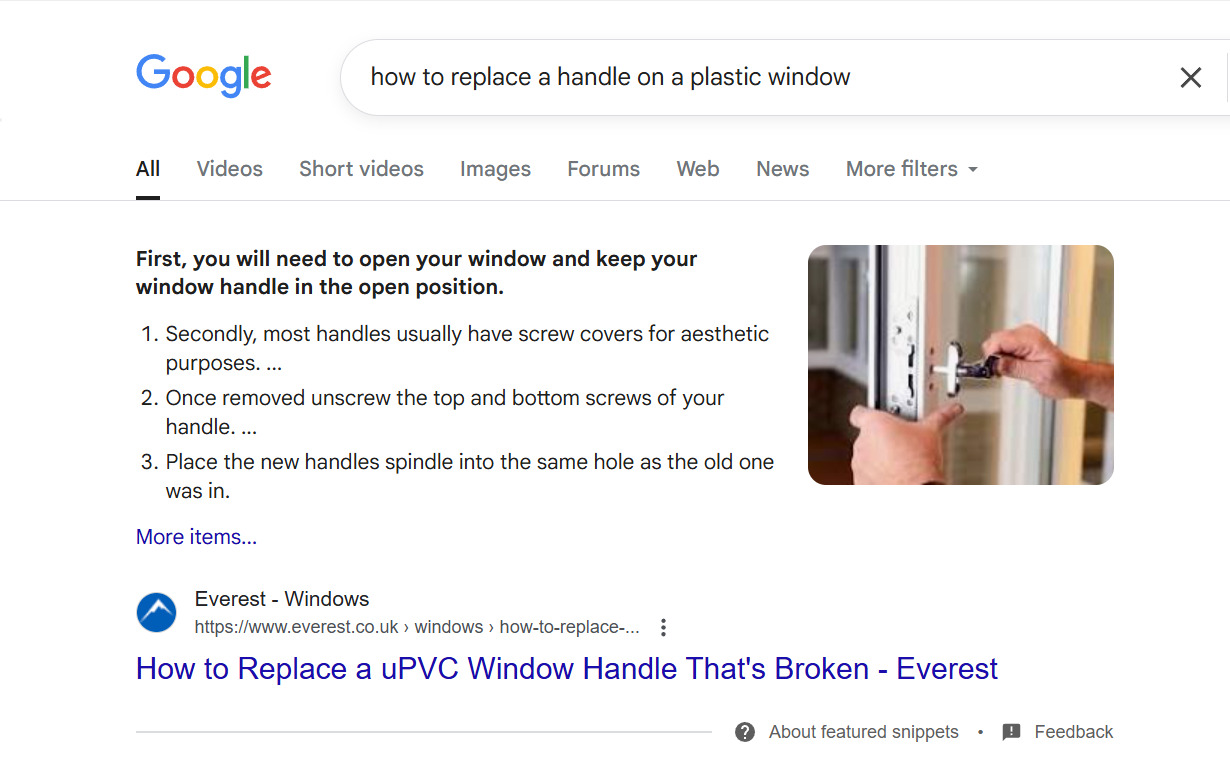
- Knowledge Panels
- Typically appear on the right (desktop).
- Summarize entities (people, companies, concepts).
- Pull data from open sources/knowledge bases.
- Often include key facts and social profiles.
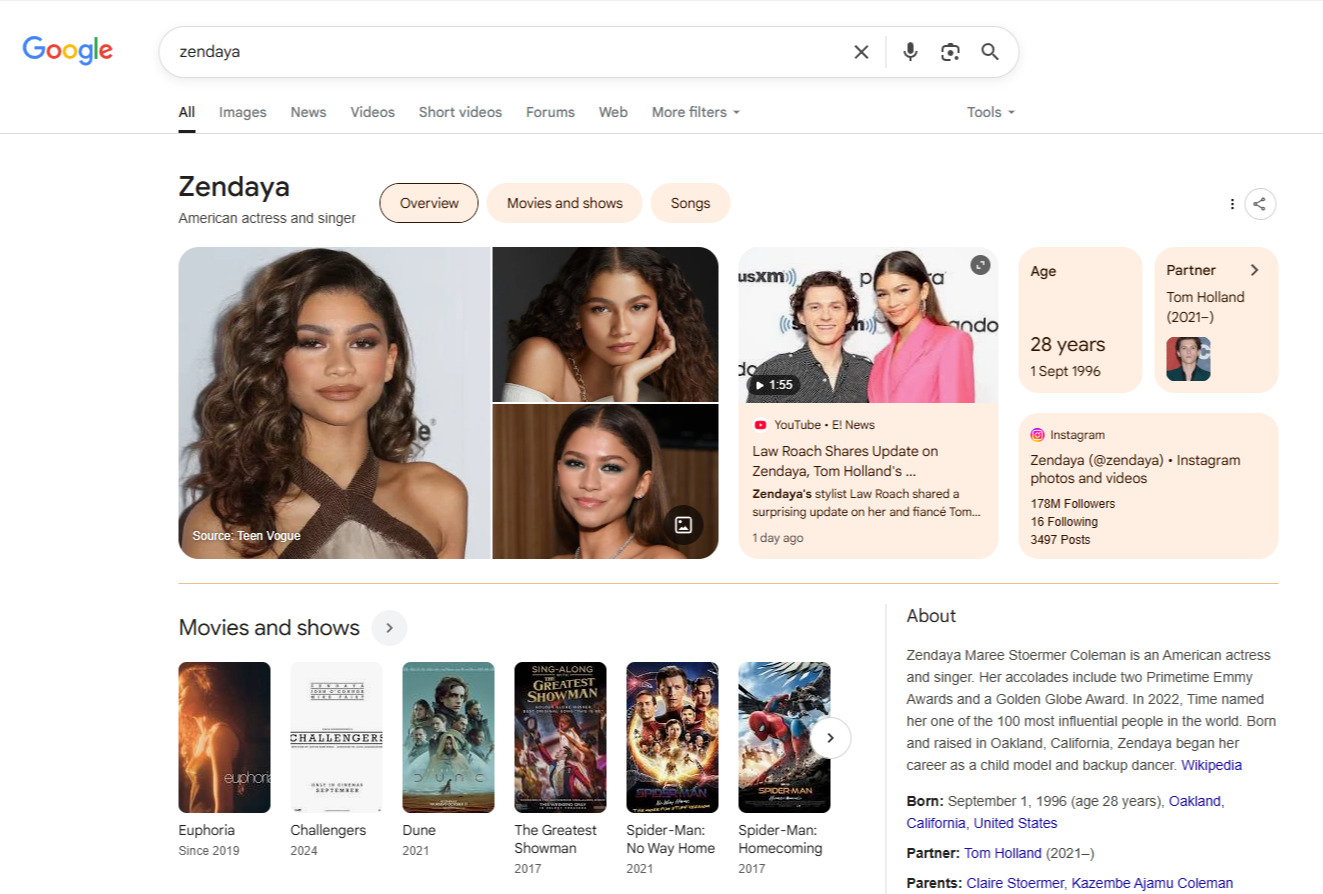
- Direct Answers
- Brief factual responses (e.g., weather, time, exchange rates).
- Often lack source links.
- Common in voice search.

- AI Overview
- Concise AI-generated summaries.
- Sources top-ranked content.
- May include links, lists, or media.
- Appears for complex queries.
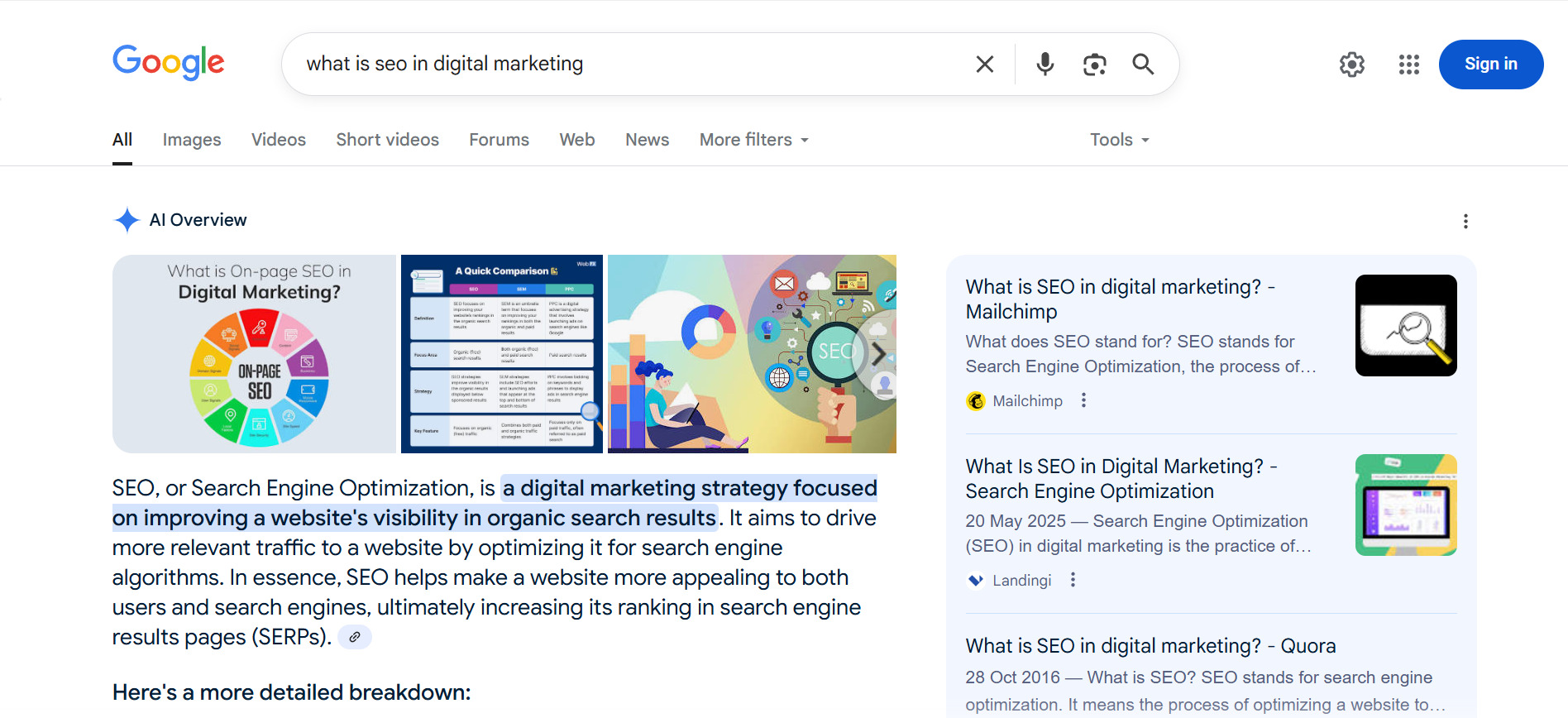
- People Also Ask
- Interactive related-question boxes.
- Expands when clicked.
- Helps expand semantic clusters for AEO SEO.
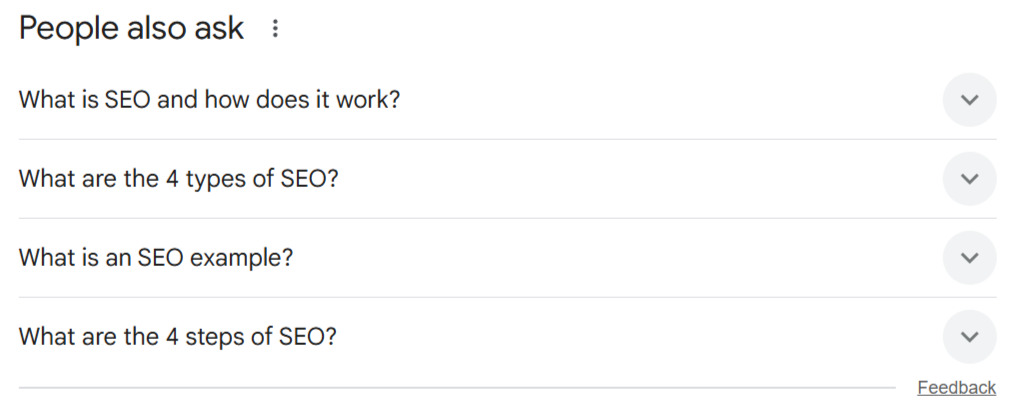
- Local Pack
- Local business listings (Google).
- Appears for geo-specific queries.
- Includes maps, contacts, reviews.
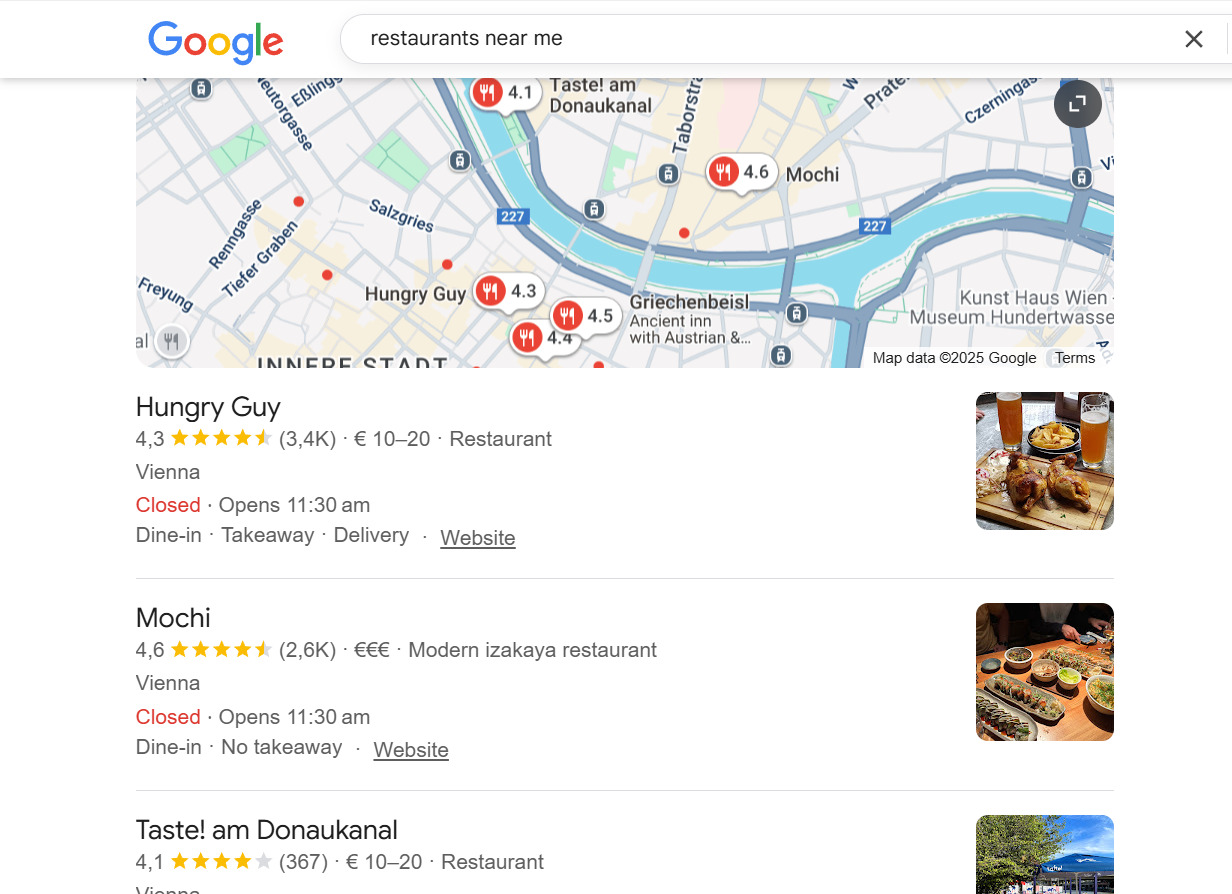
Understanding these formats allows content adaptation for specific answer types, improving chances of featured snippet optimization and SERP dominance.
How to Optimize Content for Answer Engine Optimization
Featured Snippet Optimization
To understand how to get Google featured snippets, you must first grasp their mechanics. These are blocks Google displays above organic search results, providing concise answers to user queries.
To rank for featured snippets in Google's answer boxes:
- Rank on Page One
- Over 90% of featured snippets come from top-10 results.
- Focus on general SEO to reach the first page before implementing AEO strategy.
- Answer "Who," "What is AEO," "When," "Where," "Why," and "How" Questions
- These interrogatives frequently trigger featured snippets.
- Create FAQ or Q&A sections to cover such queries.
- Analyze "People Also Ask" Sections
- This reveals questions Google seeks answers for.
- Incorporate these questions and answers into your content.
- Leverage Google Search Console Data
- Identify queries with impressions but low CTR.
- Optimize content for featured snippets for these terms to earn featured snippets.
- Create Question-Focused Content
- Include the question in H2/H3 headings.
- Provide a direct answer in the first paragraph (40-60 words).
- Expand with supporting details.
- Match Formats to Query Types
- Definitions: Clear explanations in opening paragraphs.
- Processes: Numbered step-by-step lists.
- Comparisons: Well-structured tables.
- Tips: Bullet-pointed recommendations.
- Optimize Paragraph Structure
- Ideal snippet length: 40-60 words.
- Place key information first.
- Use definitive phrasing like "is," "means," or "refers to."
- Implement Schema Markup
- While Google states markup doesn’t directly impact snippets, it aids content comprehension.
- Use QAPage, FAQPage, or HowTo schema for relevant content.
- Analyze and Improve Existing Snippets
- Identify weaknesses in competitors' featured snippets.
- Create more comprehensive, accurate responses.
- Update Content Regularly
- Freshness is critical for answer blocks.
- Augment existing content with new research.
Best Content Formats for Featured Snippet Optimization
- Paragraphs (Definitions)
- Ideal for "what is AEO" or "who invented" queries.
- Optimal length: 40-60 words.
- Begin with clear term definitions.
- Numbered Lists
- Perfect for tutorials, recipes, or guides.
- Answers "how to optimize for Answer Engine Optimization" queries.
- Keep steps concise (1-2 sentences).
- Bulleted Lists
- Effective for benefits, examples, or types.
- Works for "AEO best practices" queries.
- Tables
- Best for comparisons, pricing, or stats.
- Use descriptive headers.
- Combined Formats
- Blend definitions with examples.
- Use subheadings for organization.
Voice Search Optimization
Optimizing content for voice search grows increasingly vital as virtual assistants proliferate. Studies by Juniper Research, EMARKETER, and ZipDo show 4.2 billion voice-enabled devices existed globally in 2020, projected to double by 2024.
The voice assistant market may grow from $3.83B (2023) to $54.83B by 2033 (~26–31% CAGR) per Spherical Insights, Astute Analytica, and Market Research Future.

Voice Search Optimization Tactics
- Focus on long-tail conversational queries
- Voice queries are typically longer and more conversational.
- Incorporate phrases people actually say aloud.
- Use tools like AnswerThePublic to discover conversational queries.
- Local optimization
- 58% of consumers use voice search to find local businesses.
- Ensure your Google Business Profile is fully optimized.
- Include local markers (neighborhood, city, landmarks) in content.
- Page loading speed
- Voice assistants prioritize fast-loading pages.
- Optimize images, implement caching, and CDN.
- Test speed via PageSpeed Insights.
- Mobile optimization
- Most voice searches occur on mobile devices.
- Ensure full website responsiveness.
- Pass Google's mobile-friendly test.
- FAQ page creation
- Q&A pages are ideal for voice search.
- Structure questions as natural phrases.
- Implement FAQPage Schema markup.
- Featured snippet optimization
- Voice assistants frequently read featured snippets.
- Follow featured snippet optimization guidelines (see previous section).
How People Formulate Voice Queries

Understanding voice query formulation is critical for answer engine optimization.
Key differences between voice and text queries:
- Question words usage. Voice queries often begin with "who," "what is AEO," "when," "where," "why," and "how." Example: text query "AEO optimization" vs. voice "what is Answer Engine Optimization."
- Query length. Average voice query contains 5-9 words (varies by niche). Text queries are shorter (1-3 words).
- Conversational style. Voice queries use natural speech with colloquial phrases ("tell me," "find," "show me") and personal pronouns.
- Local intent. Frequent phrases include "near me," "close by," "in my area." Common queries about business hours, directions, contact info.
- Contextual nature. New voice queries often reference previous ones. They use relative terms ("cheaper," "closer," teammate") and time markers ("today," "now," "this year").
Examples of text-to-voice query transformation:
- Text: "AEO SEO differences." Voice: "How does Answer Engine Optimization differ from regular SEO"
- Text: "featured snippets optimization." Voice: "How to rank for featured snippets"
- Text: "AEO practices 2025." Voice: "What are the best AEO practices for 2025"
For effective optimization, incorporate complete phrases people might say during voice searches.
Semantics and Natural Language in AEO
Search engines continuously improve natural language understanding, emphasizing context and user intent over exact keyword matching.
Key aspects of semantic optimization for AEO:
- Latent Semantic Indexing (LSI)
- Use semantically related terms beyond synonyms.
- Expand semantic cores with tools like SE Ranking, Surfer SEO.
- Include terms from industry glossaries.
- Contextual relevance
- Create content that thoroughly covers topics.
- Address related subtopics for depth.
- Implement pillar-cluster content models.
- Natural language patterns
- Write content that sounds natural when read aloud.
- Avoid keyword stuffing.
- Use varied vocabulary and sentence structures.
- User intent understanding
- Distinguish informational, navigational, transactional, commercial queries.
- Adapt content to specific intent.
- Provide comprehensive answers addressing all query aspects.
- NLP technologies
- Account for BERT, MUM, and LaMDA algorithms analyzing query context.
- Structure content logically for machine understanding.
- Use structured data to clarify semantics.
- Thematic clusters
- Create groups of interlinked articles.
- Strengthen semantic connections through internal linking.
- Build content hierarchy from general to specific.
Structured Data and Schema Markup
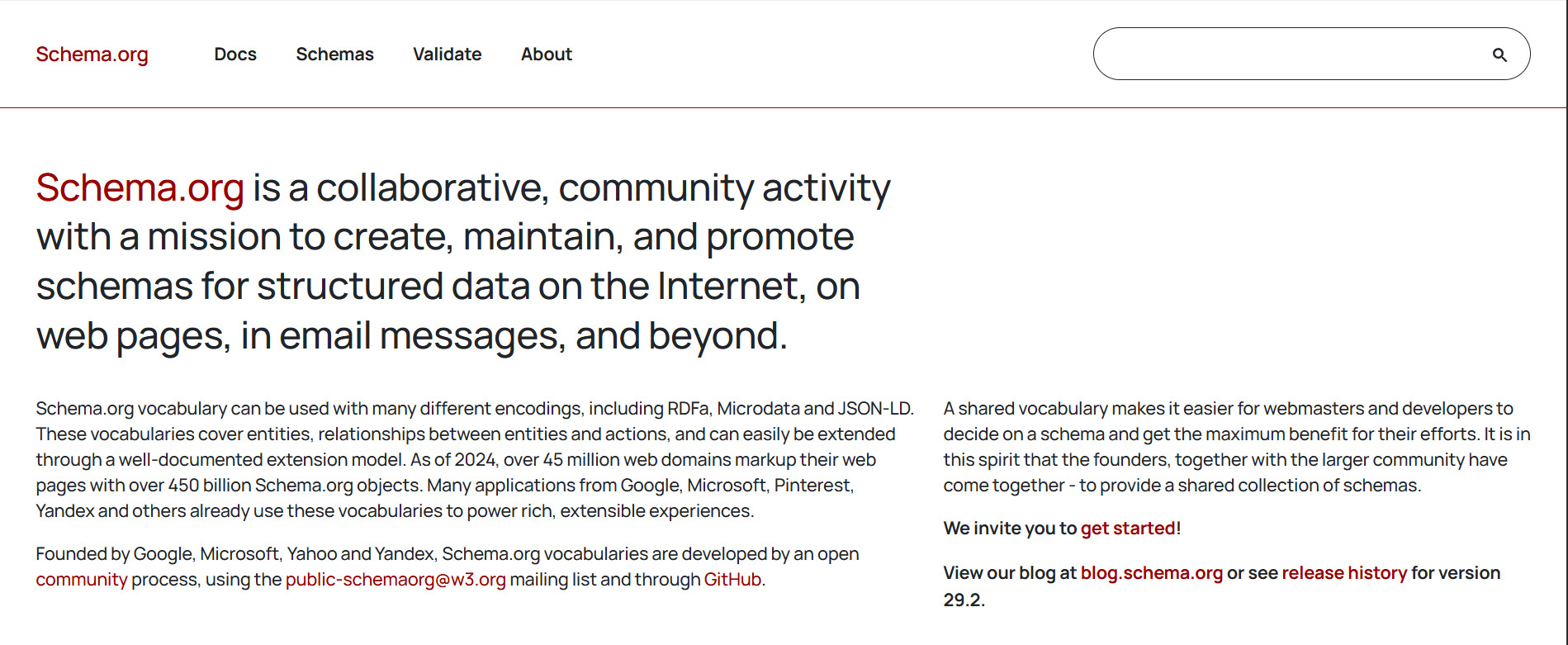
Structured data plays a crucial role in answer block SEO, helping search engines accurately understand content and increasing chances for rich results.
Schema.org - a collaborative project by Google, Bing, Yahoo, and Yandex providing standardized markup formats.
Most Effective Schema Types for AEO
- FAQPage
- Ideal for Q&A pages.
- Increases "People Also Ask" appearance chances.
- Can occupy significant SERP space.
- HowTo
- For instructions, guides, step-by-step processes.
- May display as a step-by-step SERP feature.
- Includes duration, required materials, and tools.
- Particularly valuable for DIY content, recipes, technical guides.
- Article/NewsArticle/BlogPosting
- Improves news/informational content indexing.
- Specifies publication date, author, and publisher.
- Helps Google assess information freshness.
- Recipe
- Specialized markup for cooking recipes.
- Includes cook time, ingredients, nutritional info.
- May display with ratings in SERPs.
- Product & Review
- For e-commerce and review sites.
- Displays prices, availability, ratings.
- Used for product comparison blocks.
- Event
- For events, webinars, conferences.
- Shows date, time, location directly in SERPs.
- Integrates with Google Calendar.
- LocalBusiness
- Enhances local visibility.
- Includes address, hours, contact info.
- Integrates with Google Maps.
How to Validate Markup?
Schema markup validation is critical as errors may cause search engines to ignore your structured data.
Validation tools:
- Schema Markup Validator - official Schema.org tool.
- Rich Results Test - Google's rich result checker.
- Bing Webmaster Tools - for Bing optimization.
Validation process:
- Create markup via the Schema generator or manually.
- Test using validation tools.
- Fix errors and warnings.
- Implement markup on the site.
- Submit URL to Google Search Console.
- Regularly monitor markup status.
Common Schema errors:
- Missing required fields.
- Incorrect data types (e.g., wrong date format).
- Markup/content mismatch.
- Excessive irrelevant markup.
- Using deprecated Schema types.
AEO Strategy: 2025 AEO Best Practices

Search Intent Analysis for AEO
A deep understanding of search intent forms the foundation of a successful AEO strategy. In the context of optimization, intent takes on special significance as search engines strive to provide precise answers to specific queries.
Main types of search intent and their relationship with AEO:
- Informational intent. Queries aimed at obtaining information. Often begin with "what," "how," "why", and have the highest potential for answer blocks and featured snippets.
- Example query: "how does voice search work"
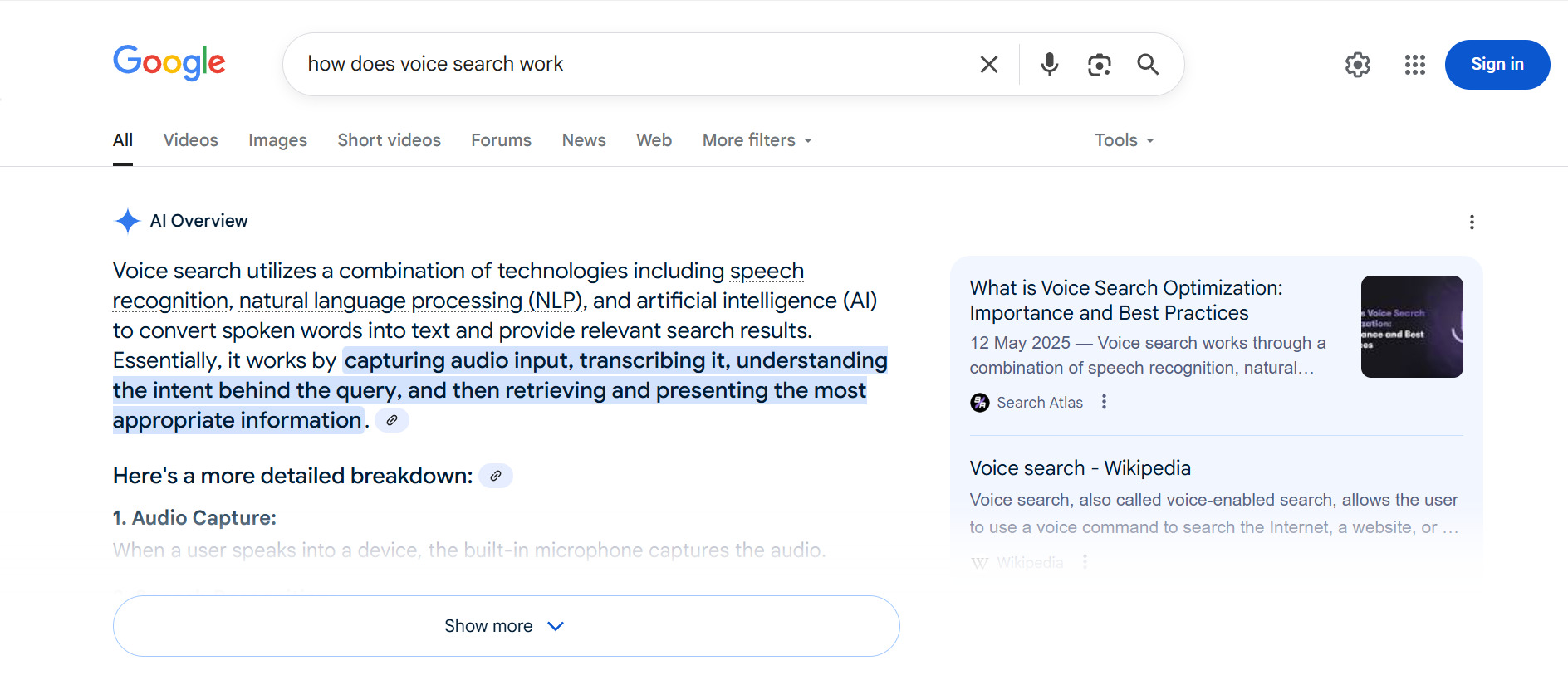
- Navigational intent. The goal is to find specific websites or pages. Typically contain brand or product names, less suitable for AEO, but may trigger knowledge panels.
- Example query: "Schema official website"
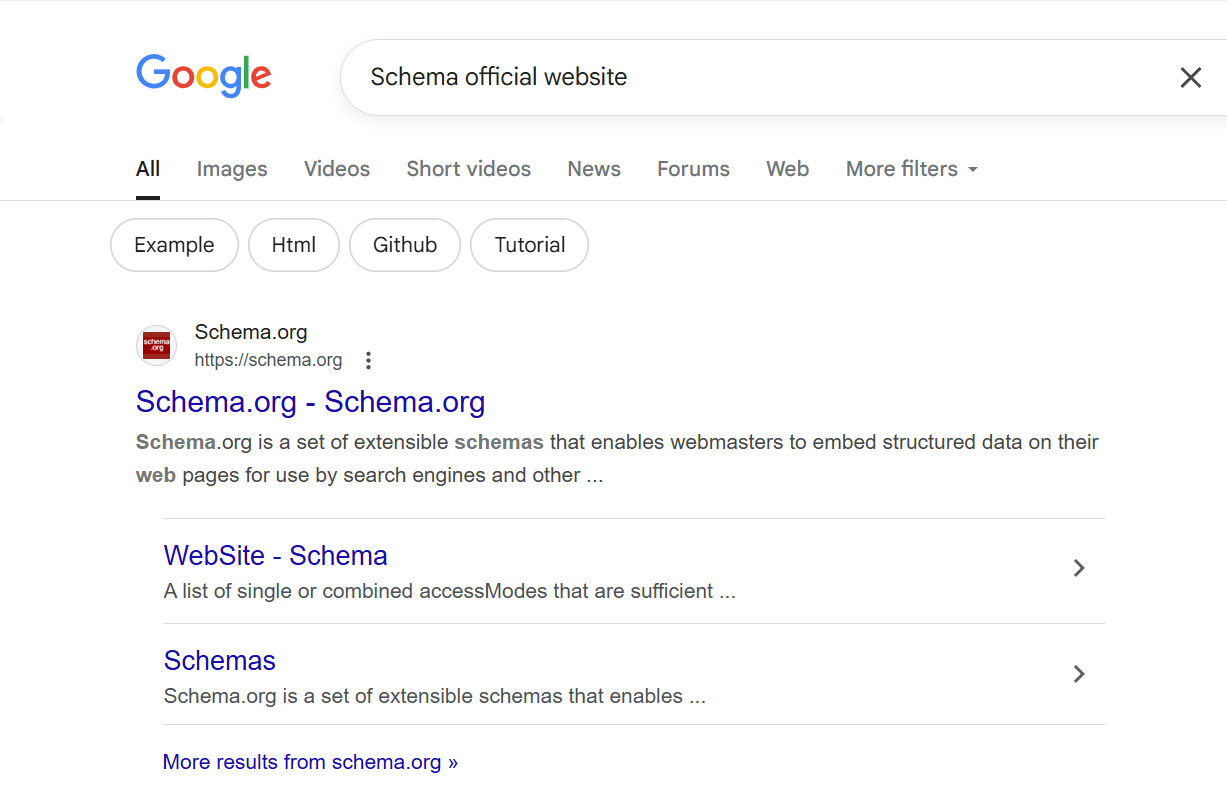
- Transactional intent. Aimed at completing actions (purchases, downloads). May trigger price, rating, and availability blocks.
- Example query: "buy laptop"
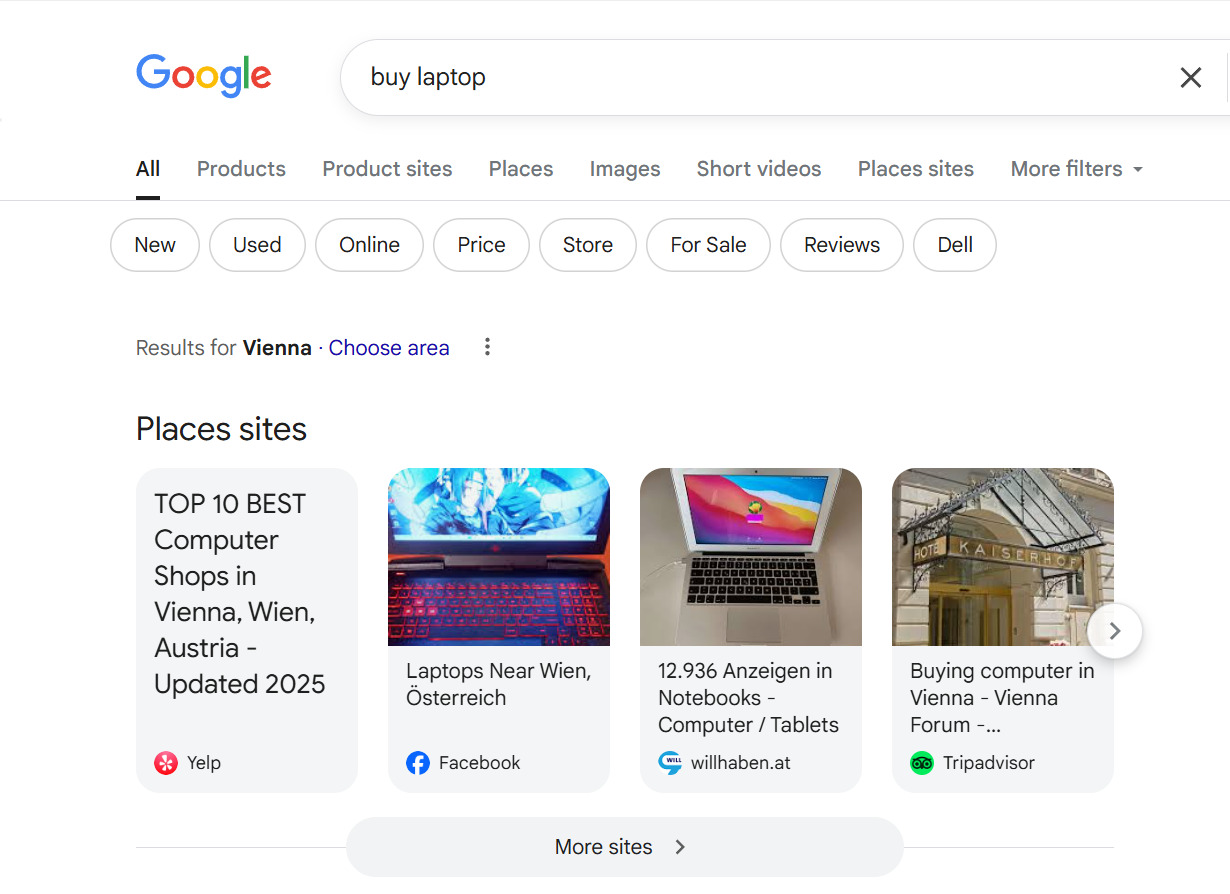
- Commercial investigation intent. Queries during the research phase before purchase. Often contain comparisons, reviews, “best” products, and work well with table-style featured snippets.
- Example query: "SEO tools comparison"
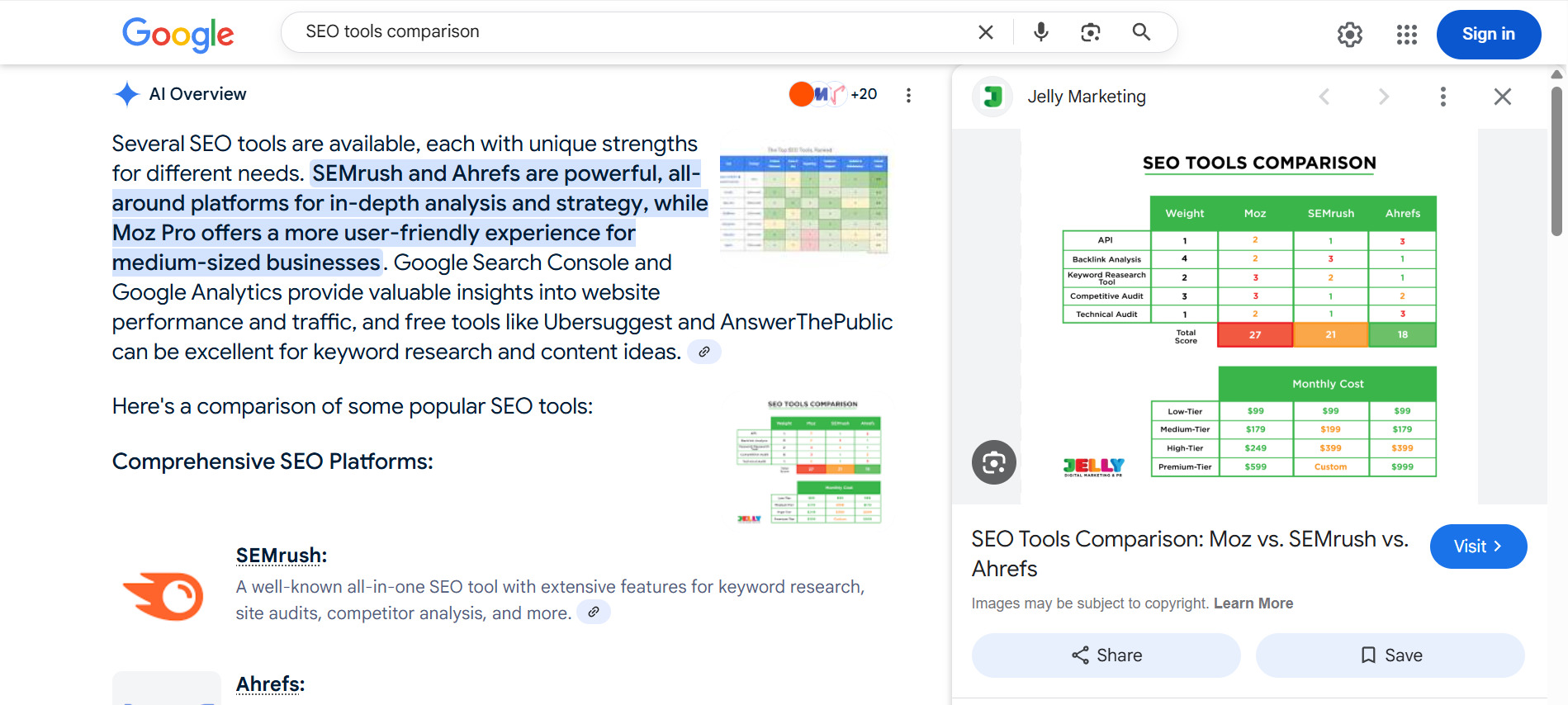
AEO intent analysis methodology:
- Identifying niche questions - Use Answer The Public, analyze "People Also Ask" blocks, research forums and Q&A platforms.
- Intent-based clustering - Group queries by informational, transactional, and other intents, identify connections between different intent types.
- SERP analysis for target queries - Study existing answer blocks, analyze the quality and completeness of current answers.
- User journey mapping - Determine query sequences during topic research, and create content to accompany users at each stage.
Intent analysis tools:
- SERPstat - for analyzing intent types by query.
- MarketMuse - for determining content semantic completeness.
- Frase.io - for question research and AEO content creation.
- SearchMetrics - for analyzing SERP features by query.
Creating Direct Answer-Oriented Content
For successful voice search optimization and answer blocks, follow specialized content creation principles. Here are AEO best practices:
- Inverted pyramid principle
- Place most important information first.
- Start with a direct answer in the first paragraph.
- Gradually reveal details and nuances.
- Clear thematic structure
- Use H1, H2, H3 headings for hierarchy.
- Each section should address a specific aspect of the topic.
- Logically connect sections.
- Provide summaries for complex sections.
- Content markers for search engines
- Use marker phrases: "definition," "example," "benefits," "steps."
- Apply introductory constructions where appropriate.
- Clearly mark transitions between text parts.
- Emphasize cause-and-effect relationships.
- Optimal length and depth
- Direct answer: 40-60 words for a potential featured snippet.
- Full section: sufficiently detailed for comprehensive understanding.
- Complete article: covering all topic aspects (typically 1500+ words).
- Maintain the balance between answer brevity and article completeness.
- Visual structuring
- Use bulleted and numbered lists for enumerations.
- Create tables for comparisons and classifications.
- Highlight key terms and definitions in bold.
- Multi-format content creation
- Combine text, video, audio.
- Duplicate key information in different formats.
- Adapt the format to the topic specifics.
- Consider Google's increasing inclusion of videos in featured snippets.
- "One query - one answer" principle
- Focus on a specific question in each section.
- Avoid mixing different topics in a single text block.
- Provide exhaustive answers, leaving no follow-up questions.
- Anticipate users' logical next questions.
Answer block content template:
- H2 Heading: Clear question
- First paragraph: Direct answer (40-60 words)
- Following paragraphs: Expanded explanation with examples
- H3 Subheadings: Topic aspect details
- Conclusion: Brief summary or practical recommendations
Using Q&A Format in Article Structure

The Q&A format is one of the most effective methods for featured snippet optimization. It naturally aligns with how users phrase queries and how search engines provide answers.
AEO benefits of Q&A format:
- Direct query matching
- Questions often precisely match user queries.
- Increases content relevance for search algorithms.
- Boosts chances of getting featured snippets.
- Improved user experience
- Helps readers quickly find needed information.
- Naturally structures content logically.
- Matches how people mentally organize information.
- Long-tail query coverage
- Each Q&A pair can rank for separate queries.
- Increases the total ranking of keywords.
- Covers different phrasings of the same query.
Q&A implementation strategies:
- Dedicated FAQ section
- Create a separate FAQ section at the end of the article.
- Cover additional aspects not in the main text.
- Use Schema.org FAQPage markup.
- Full-article Q&A structure
- Use questions as H2/H3 subheadings.
- Provide direct answer after the heading.
- Expand the topic in the following paragraphs.
- Create a logical question sequence from basic to advanced.
- Combined approach
- Main article in traditional format.
- Q&A blocks in key sections.
- FAQ section at the end.
- Interactive expandable answers.
- Interview format
- Present content as expert interview.
- Ask questions reflecting user queries.
- Provide detailed expert answers.
- Especially effective for boosting E-E-A-T (Experience, Expertise, Authoritativeness, Trustworthiness).
Position 0 Optimization
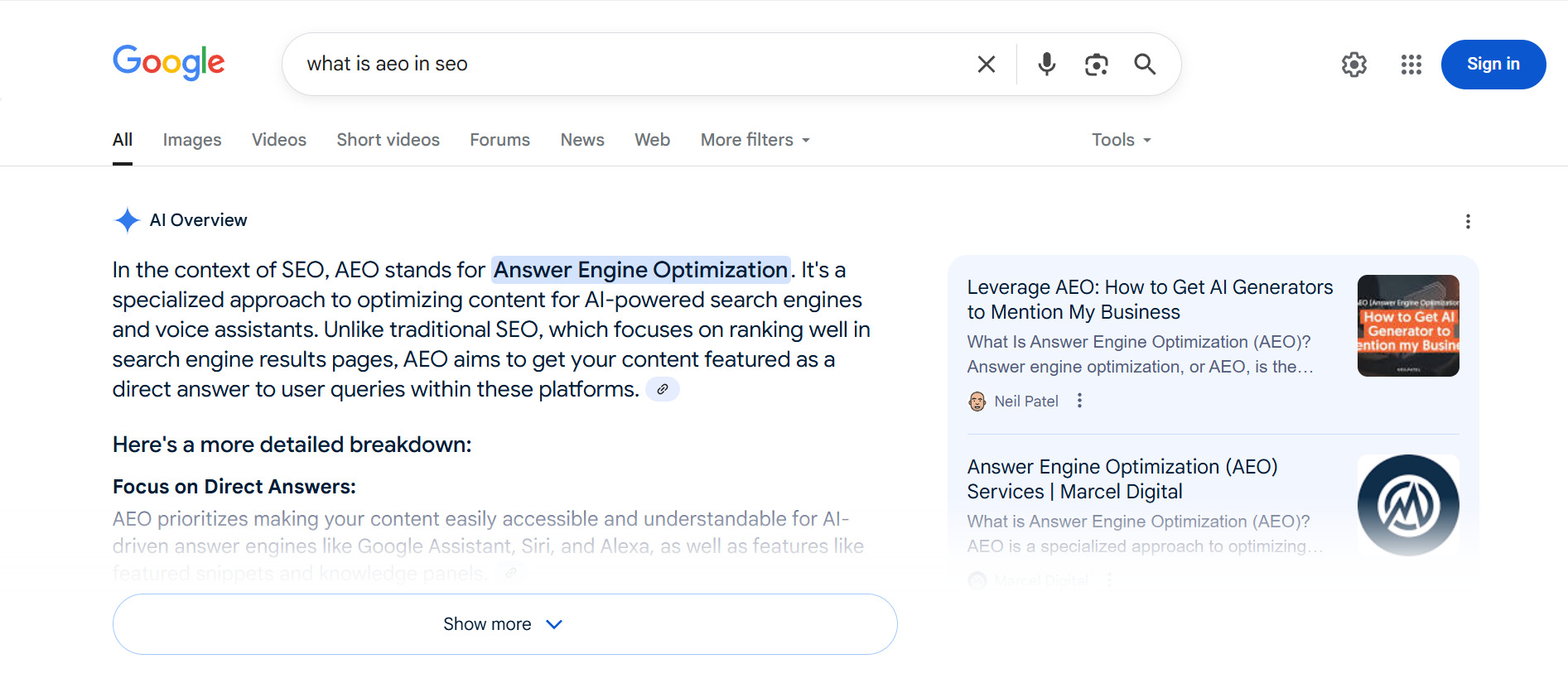
Position 0 is a special spot in search results above organic listings – typically, a featured snippet displaying direct answers to user queries.
Position 0 optimization strategies:
- Opportunity identification
- Find queries already showing featured snippets.
- Focus on queries where you rank in the top 10.
- Use tools like Ahrefs, SEMrush, Moz.
- Prioritize high-volume, business-relevant queries.
- Targeted content formatting
- Match format to query type:
- Definitions → paragraphs
- Processes → numbered lists
- Comparisons → tables
- Categories → bulleted lists
- Include an exact question match in the heading.
- Place a concise answer (40-60 words) right after the heading.
- Technical optimization
- Use clean HTML structure (h2, h3, ul, ol, table).
- Ensure fast page loading.
- Apply proper Schema markup.
- Answer quality and completeness
- Make answers more comprehensive than competitors'.
- Provide verified, up-to-date information.
- Support claims with data and sources.
- Keep content current with regular updates.
- Snippet capturing tactics
- Analyze competitors' featured snippets.
- Identify their weaknesses (incomplete/outdated answers).
- Create better-structured, more complete content.
Performance metrics:
- Featured snippet count - Track total snippets obtained and retention stability.
- Snippet CTR - Compare CTR between organic results and snippets. Note that low CTR may be normal for some queries.
- Branding metrics - Monitor branded query growth and social mentions.
- Long-funnel conversions - Track paths from informational to conversion queries, measuring answer block visibility impact.
AEO Analysis and Optimization Tools
Featured Snippet Tracking Services
Specialized tools are essential for effective AEO optimization. They help track, analyze, and improve content for search answer blocks.

Free tool from LinkBuilder.com. Identifies popular queries for your business, analyzes them, and shows which pages are cited in search answers. Subscribe to LinkBuilder.com to analyze your featured snippet presence.
Semrush

Semrush offers a Position Tracking feature. Shows pages gaining answer blocks and for which queries. Reports reveal dominant snippet types in your niche (paragraphs, lists, tables) to help adapt content.
Ahrefs

Ahrefs finds competitors' snippets via Site Explorer and SERP Features. Filter queries with existing snippets to create better content for "position stealing." Content Explorer helps find high-potential answer engine optimization topics.
SE Ranking

This tool monitors SERP elements, including featured snippets. Provides data on pages already in answer blocks and those with snippet potential.
These search engine optimisation services help track current answer block positions and discover new AEO opportunities.
Voice Search Analysis
For direct testing, use voice assistant devices:
- Google Assistant - Check how it answers niche queries. If answers cite your site, your featured snippet optimization works.
- Amazon Alexa - Uses Alexa Skills Kit for skill development. Analyze Alexa's answers to niche questions.
- SoundHound Houndify - Developer platform for testing voice queries and analyzing responses.
Voice optimization effectiveness evaluation
To assess voice search optimization effectiveness, track:
- Traffic growth from long question queries
- Increased featured snippet visibility
- Branded query growth after optimization
- Local-intent query rankings
Direct voice traffic data is hard to obtain, but these indicators help evaluate answer engine optimization efforts.
Using ChatGPT and Other AI Tools for AEO

Proper AI tool usage helps create content more likely to appear in answer blocks.
ChatGPT
Use ChatGPT for:
- Drafting the FAQ section structures
- Generating question-style headings
- Creating clear, concise definitions
- Developing step-by-step instructions
Important: ChatGPT-generated content requires fact-checking, unique data additions, and site style adaptation.
Anthropic's Claude
Claude provides more structured, accurate answers. Useful for:
- Factually precise content
- Complex question answering, requiring logic
- Creating comparison tables for answer blocks
Jasper
Specialized AI content tool with FAQ templates.
Clearscope
An AI-powered tool that analyses competitor content and suggests optimizations.
AI Ranker
Specialized AEO SEO tool analyzing existing snippets and providing optimization recommendations. Assesses your content's answer block potential and suggests specific improvements.
AI Ranker uses AI-powered SEO to analyze:
- Current snippet structures in your niche
- Content's semantic alignment with queries
- Optimal answer length and formatting
For professional AEO assistance, contact LinkBuilder.com, a leading search engine optimisation company. Our experts will audit your site and develop an effective answer block strategy.
The Future of Answer Engine Optimization
Large Language Models (LLMs) Impact on AEO and SEO
LLMs are fundamentally changing search engine optimisation. Generative search powered by LLMs (Google SGE, Bing AI) provides synthesized answers from multiple sources, altering traditional search interaction paradigms.
For SEO, this creates new challenges: users get answers directly in SERPs without visiting sites. "Position 0" optimization and becoming an AI citation source become critical strategies.
LLMs enhance search engines' content understanding through deeper natural language, context, and intent analysis. This requires rethinking traditional ranking and content creation approaches.
Successful adaptation requires:
- Creating comprehensive expert content
- Structuring information for easy LLM extraction
- Optimizing for conversational queries
- Implementing semantic markup
- Strengthening E-E-A-T signals
Future AEO/SEO success will depend on working with LLMs: API integration, specialized data creation, and voice/chat interface adaptation. Companies must experiment with formats, improve content structure, and monitor algorithm updates to maintain visibility in the generative search era.
AI and Neural Networks’ Impact on AEO Development

Artificial intelligence is transforming search engines and answer engine optimization approaches. These changes are just gaining momentum.
Generative search as a new reality
Google SGE, Bing AI, and Perplexity show generative search becoming mainstream. Search engines now create answers rather than just find information.
For AEO SEO, this means:
- Greater emphasis on E-E-A-T
- Need for content structuring facilitating AI extraction
- Increased importance of being cited in generated answers
Multimodal search
Search engines actively use multimodal models (text + images + video). Google MUM and GPT-4V demonstrate the ability to analyze multiple content types simultaneously.
For AEO, this leads to:
- Importance of optimizing all media types
- Need for consistency between text and visuals
- Potential to appear in answer blocks via well-optimized images
Personalized answers
AI searches are more personalized, considering query history, location, and preferences.
This affects optimization:
- Different users see different answer blocks
- Local context gains importance
- Content must address diverse user needs
Conversational search
AI improves understanding of natural queries and conversation context. Search engines remember previous questions when forming answers.
For voice search optimization, it's essential to:
- Account for contextual queries
- Create content answering related questions
- Use natural, conversational language
AEO Integration Forecasts for New Search Formats
Search engines keep evolving, and Answer Engine Optimization must adapt to new formats.
Visual answers
Search engines increasingly include visual elements in answer blocks. Google already shows video clips directly in SERPs.
AEO SEO forecasts:
- Image/video optimization becomes essential
- Infographics/diagrams will appear more in answer blocks
- Well-structured video content with subtitles gets priority
Interactive answers
Future answer blocks will become more interactive, letting users refine questions or explore related topics without leaving SERPs.
For interactive answer optimization:
- Content should anticipate follow-up questions
- Build clusters of related content
- Develop deep pages with comprehensive answers
AR/VR search
As augmented/virtual reality develops, search becomes more immersive. Google already experiments with AR in search.
AR/VR forecasts:
- 3D models/AR visualizations will become optimization factors
- Spatial data gains importance
- Content must adapt to new presentation formats
Decentralized search
Web3 and blockchain may lead to decentralized search engines with transparent, manipulation-resistant ranking mechanisms.
Future Answer Engine Optimization guide:
- Verified author expertise becomes crucial
- Distributed reputation systems change authority approaches
- Open protocols may standardize optimization methods
Implement AEO for your site today! Contact LinkBuilder.com, a trusted search engine optimisation company - we'll help your content appear in quick answers and achieve Position 0 rankings.
